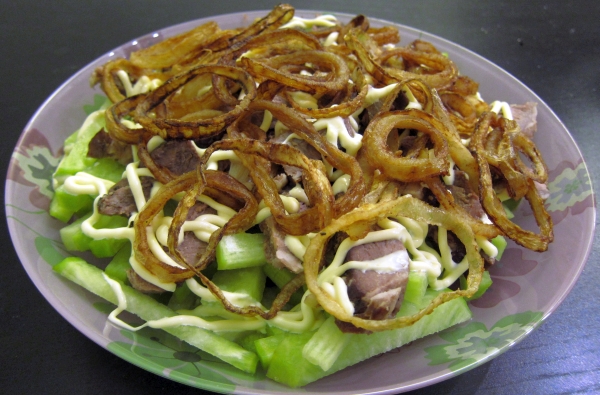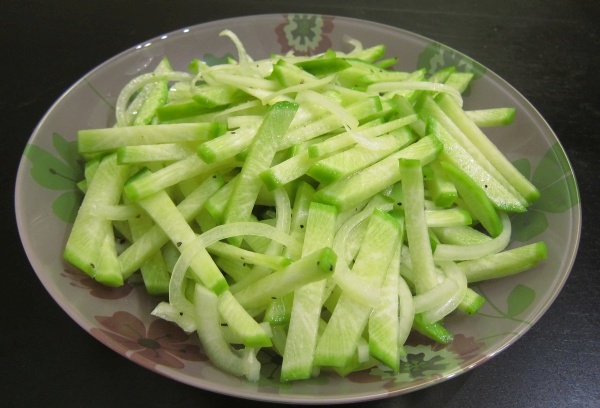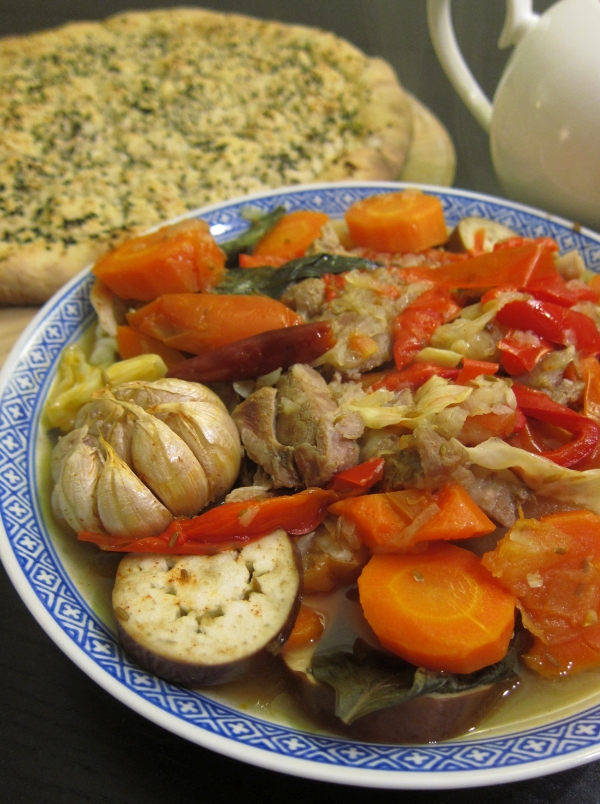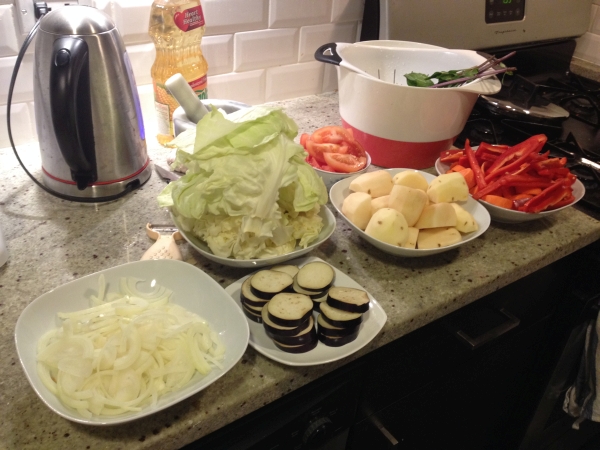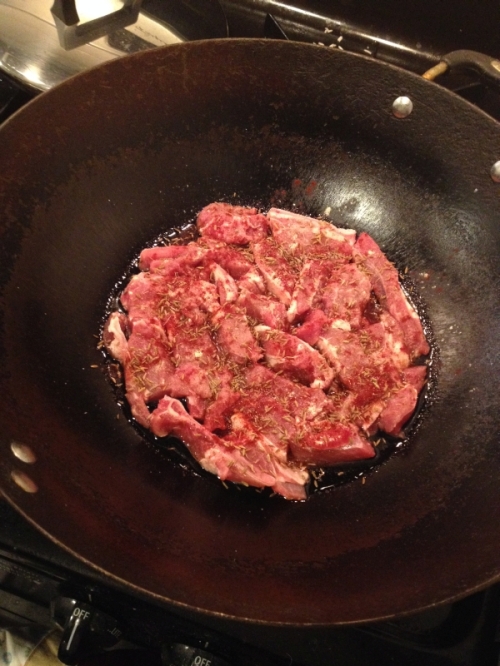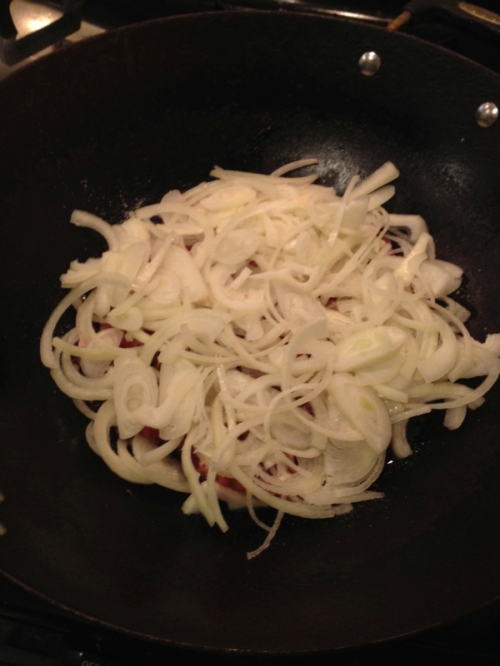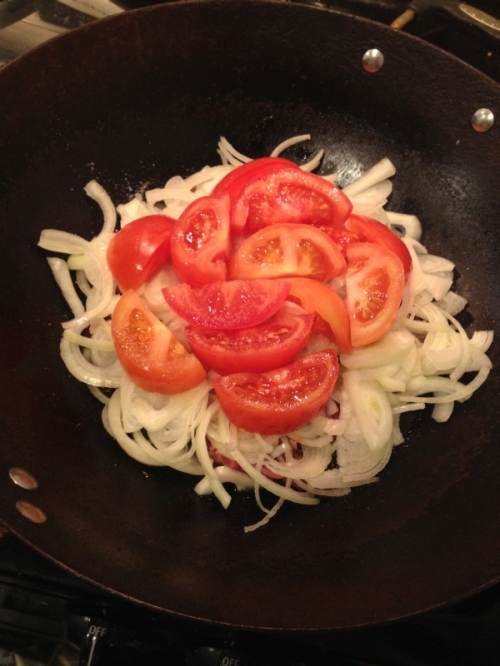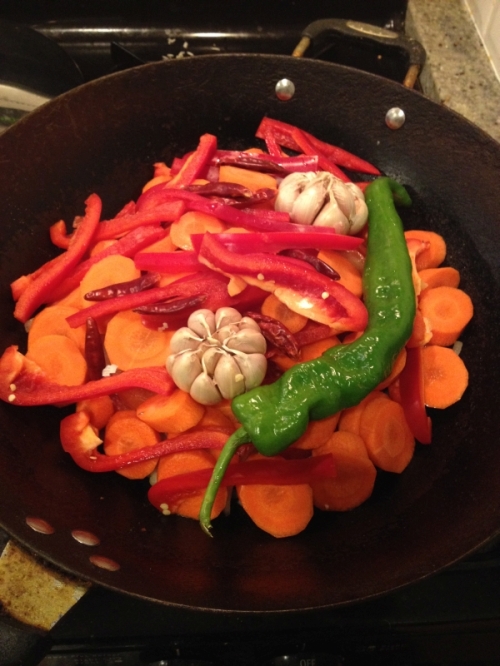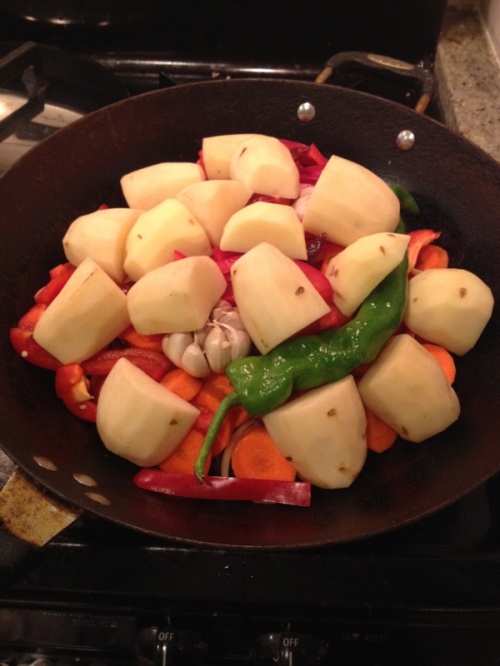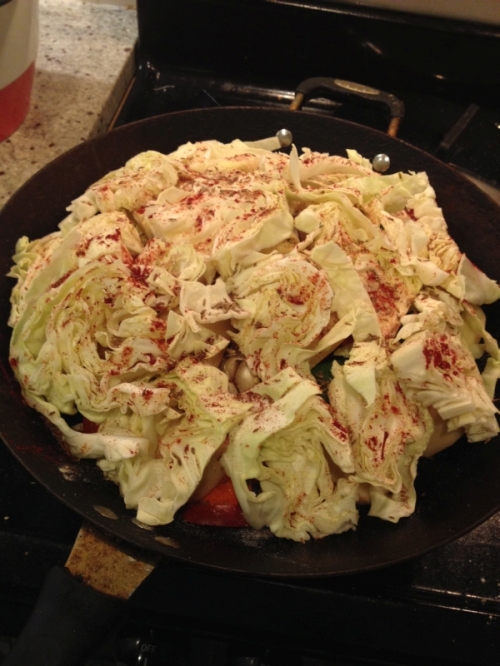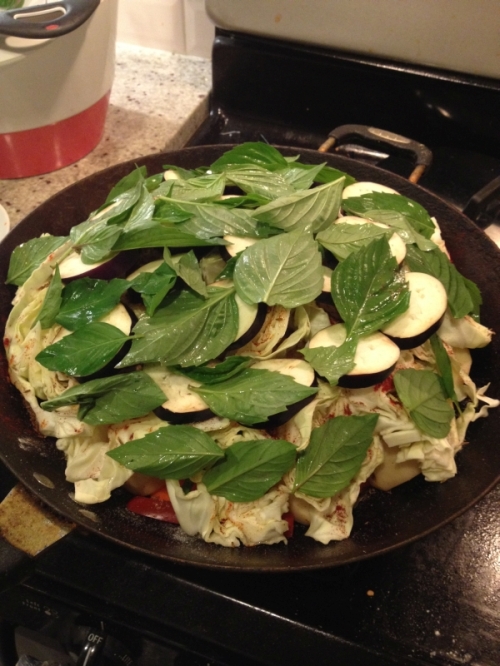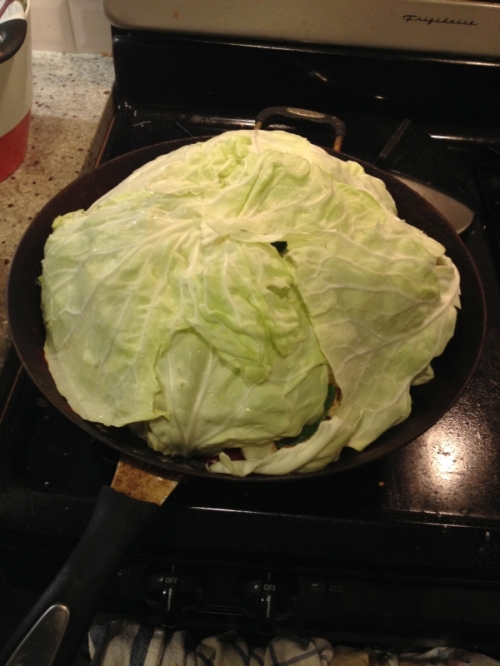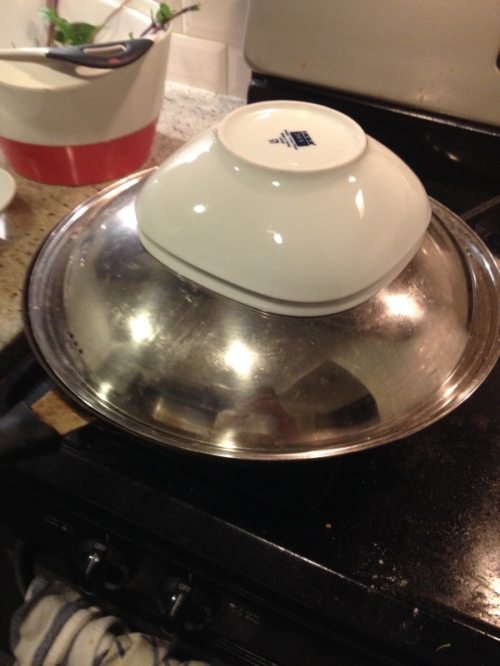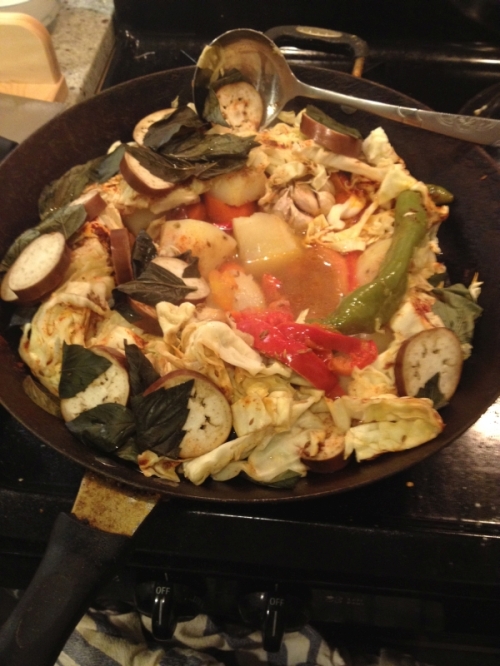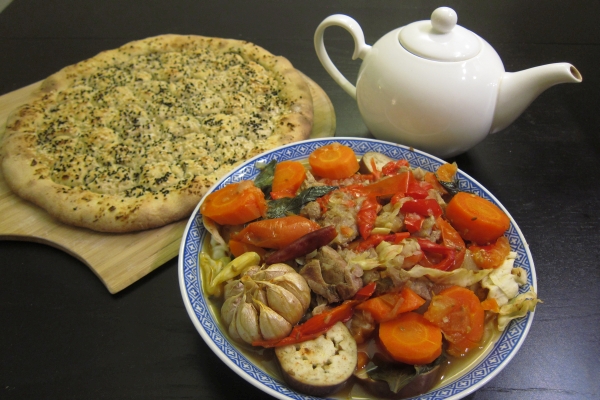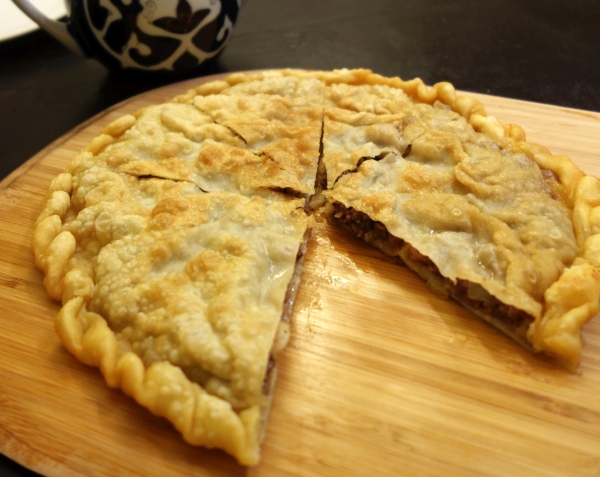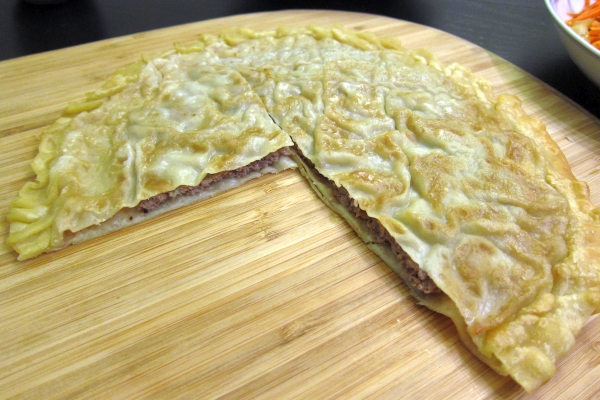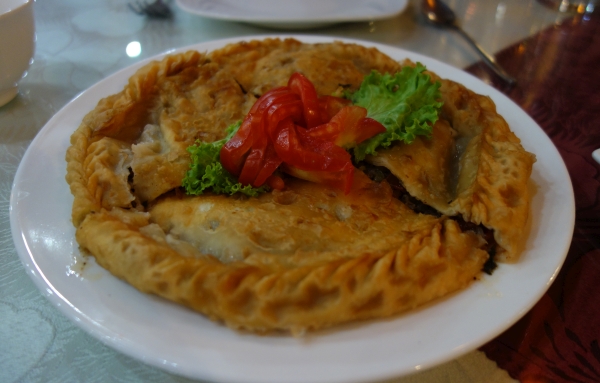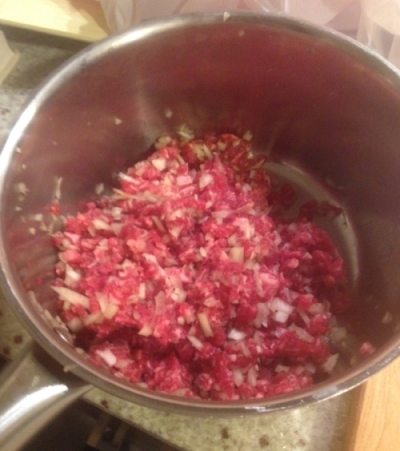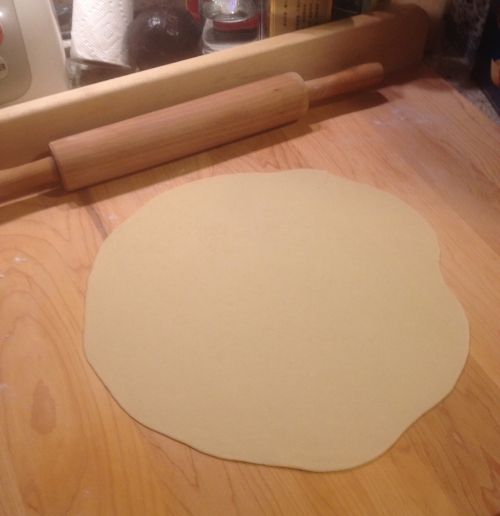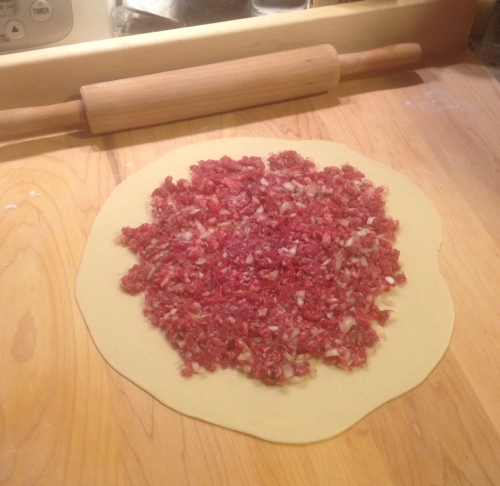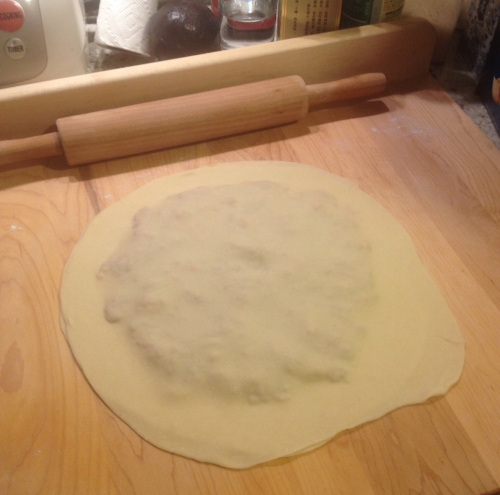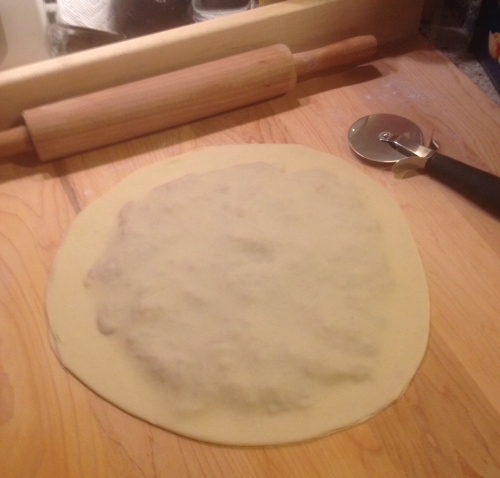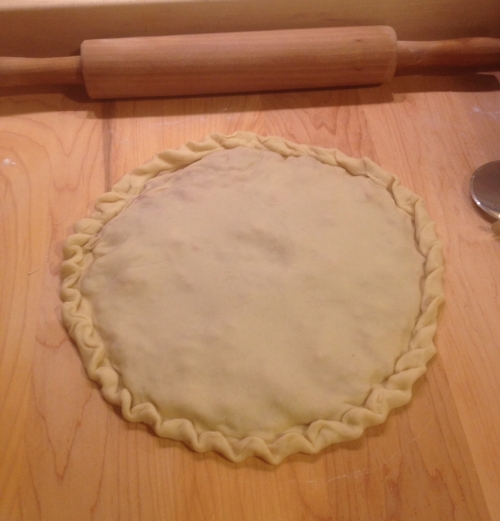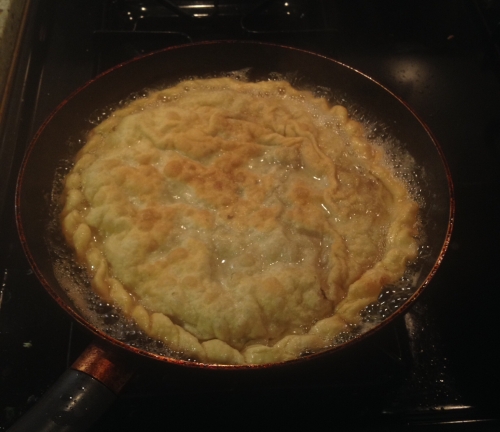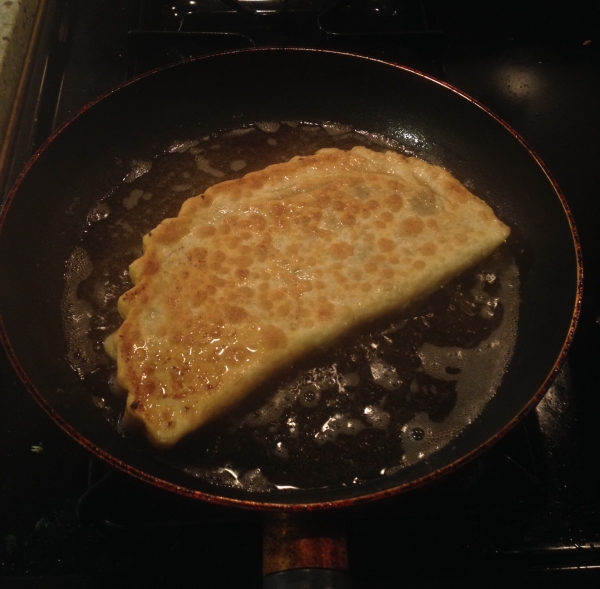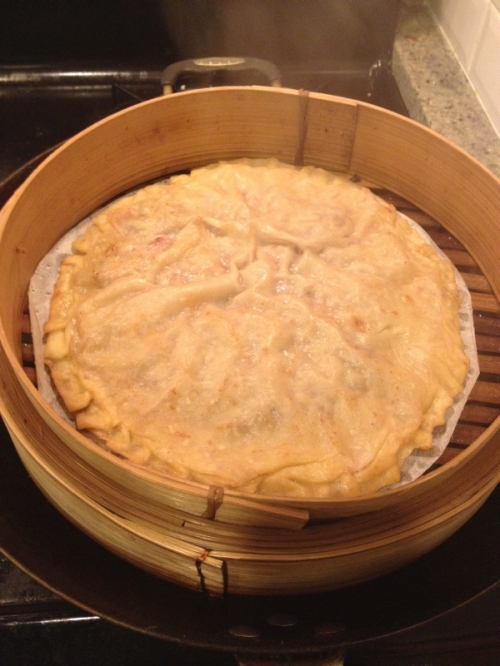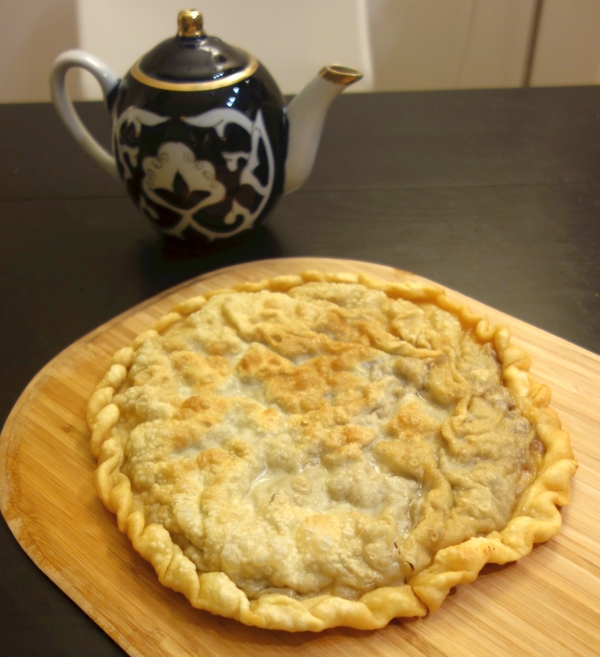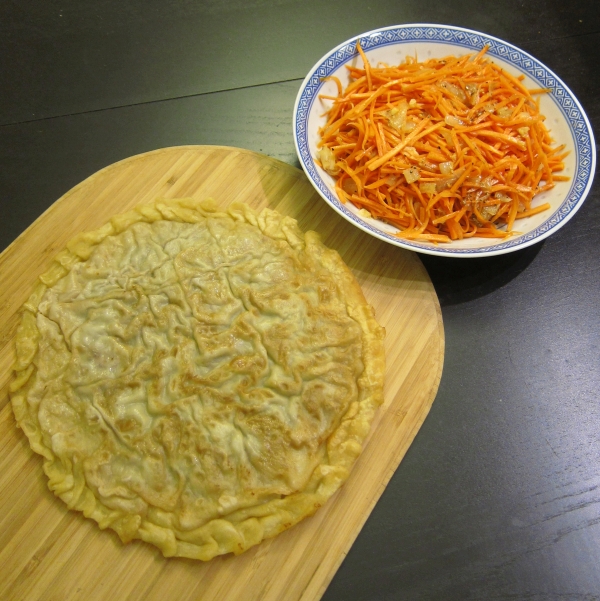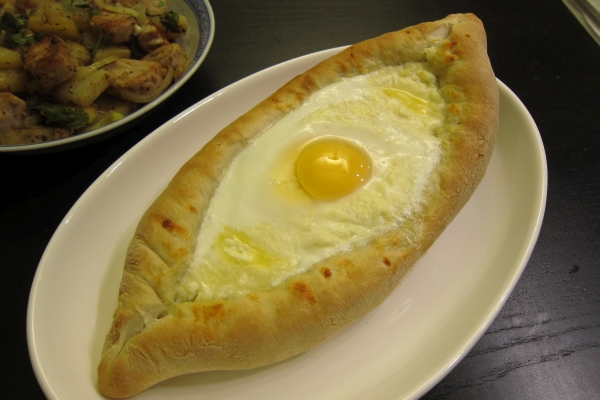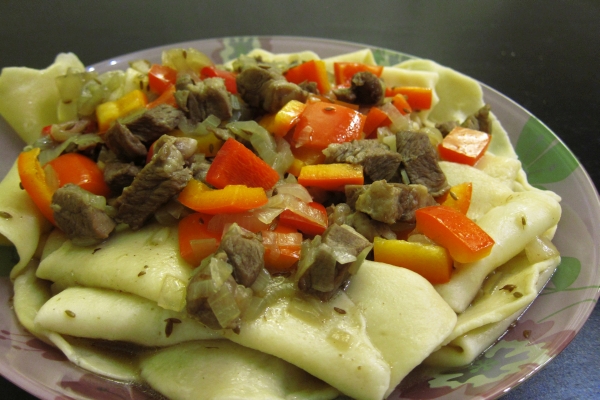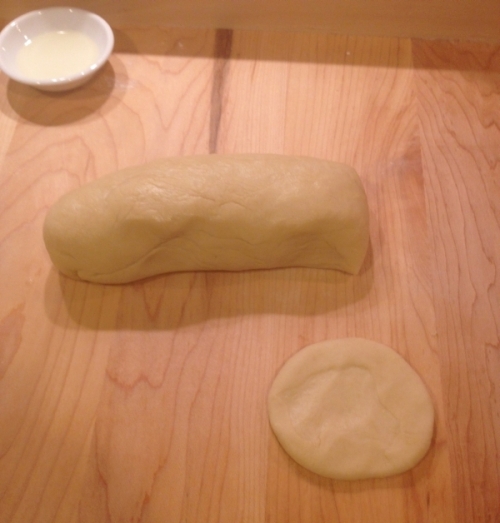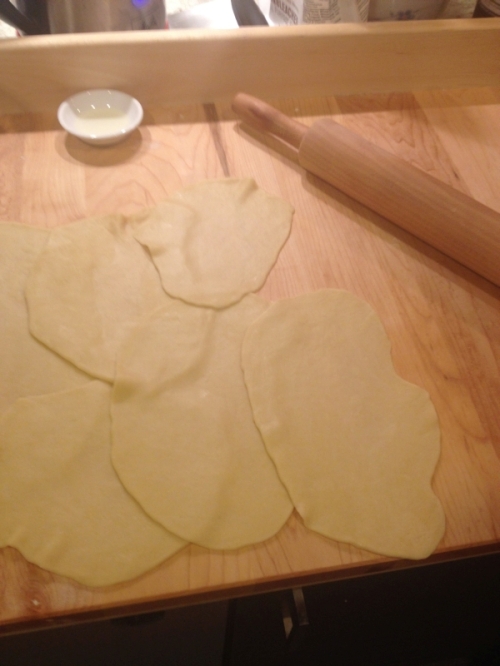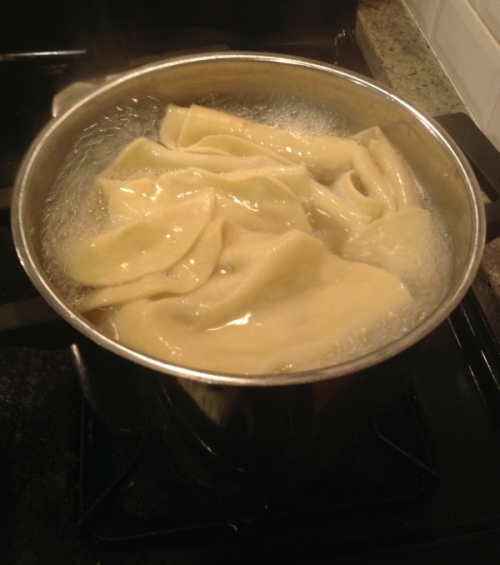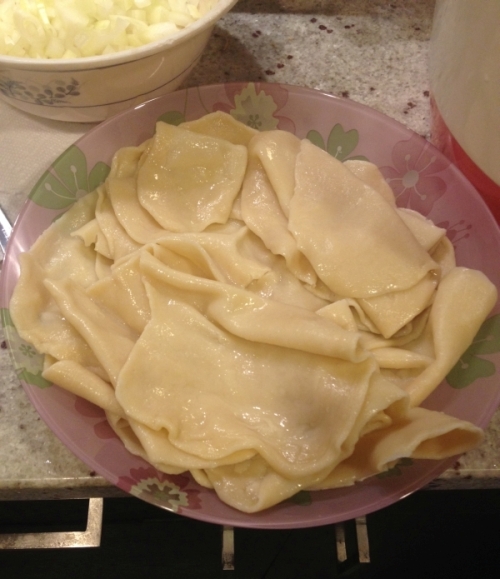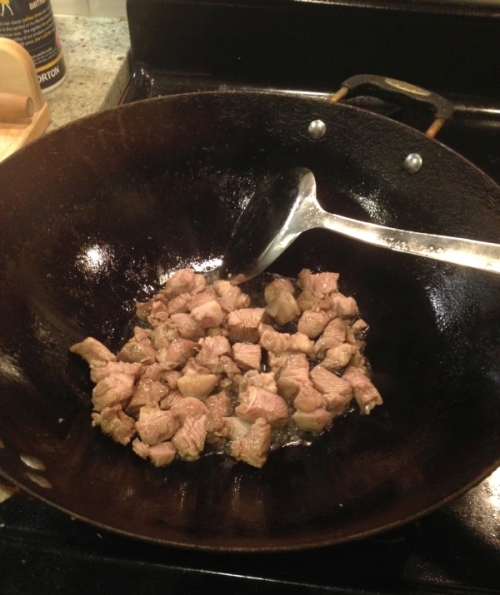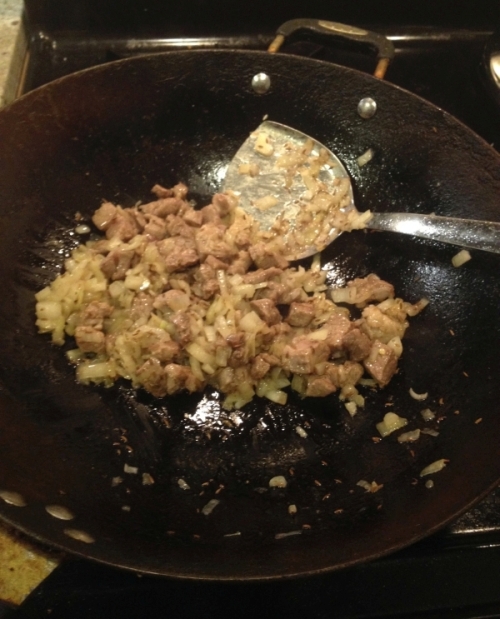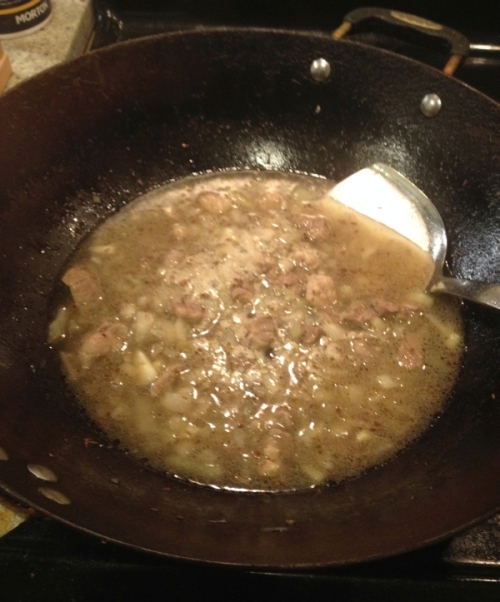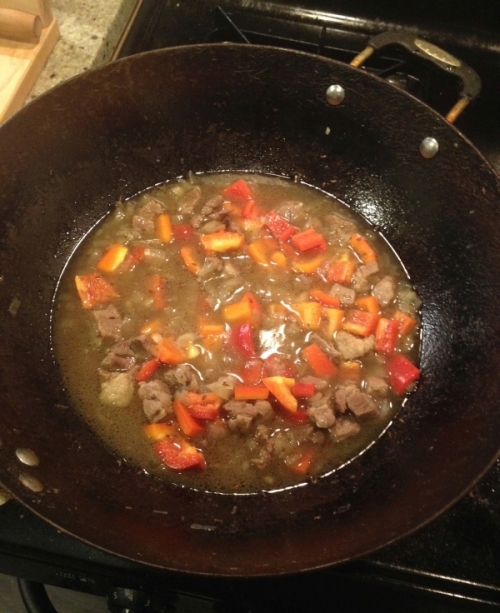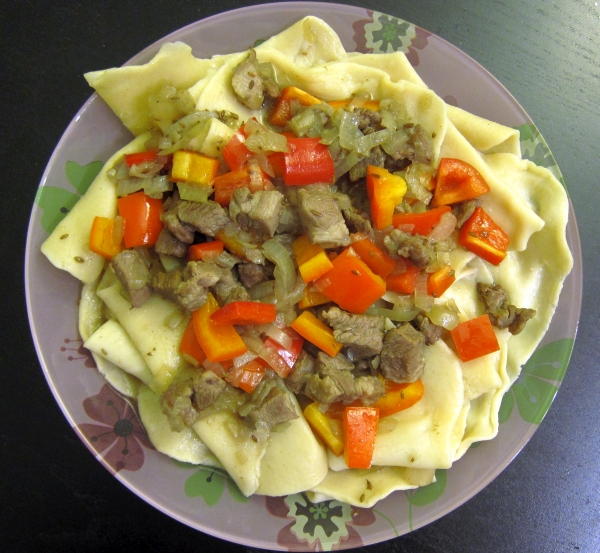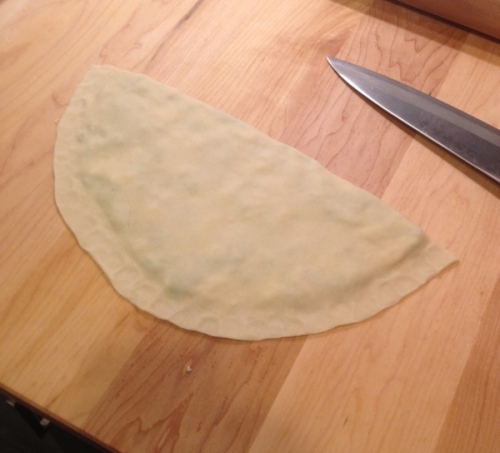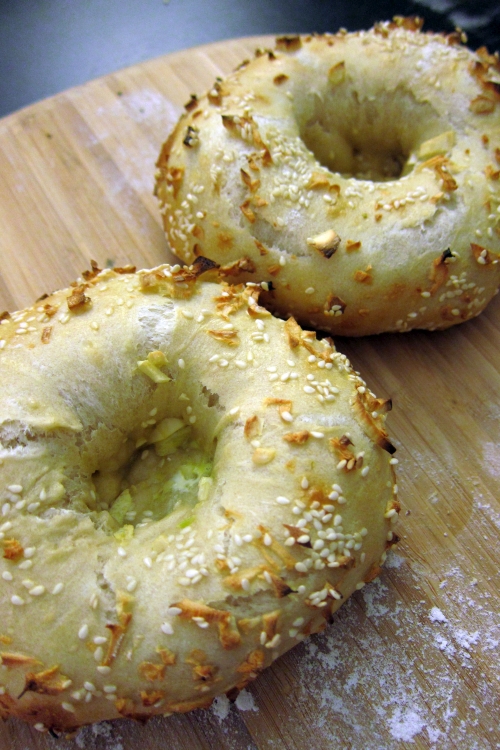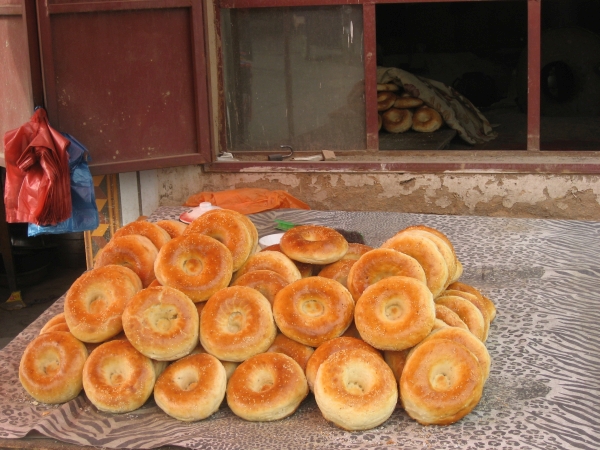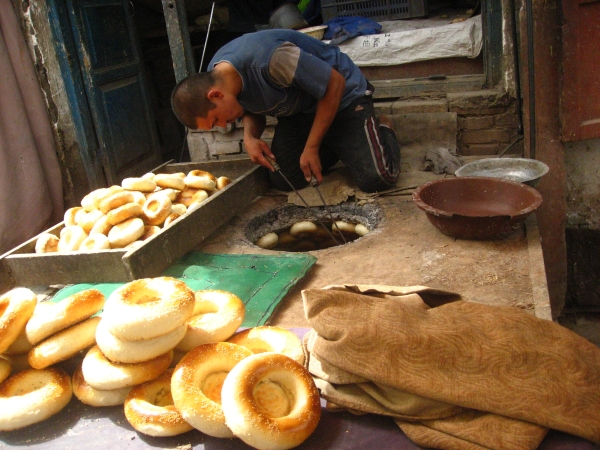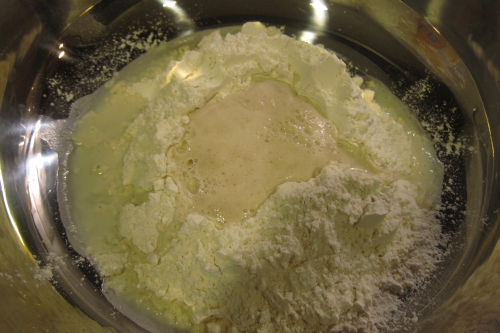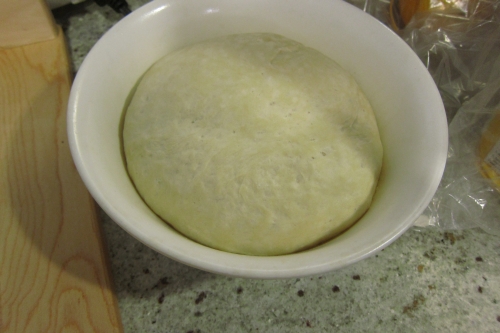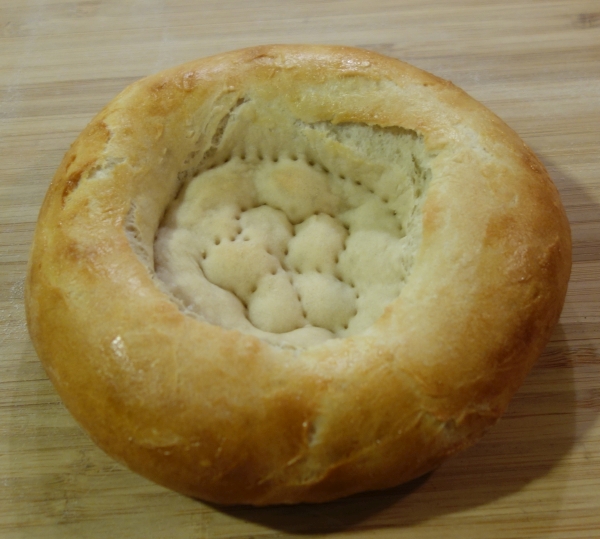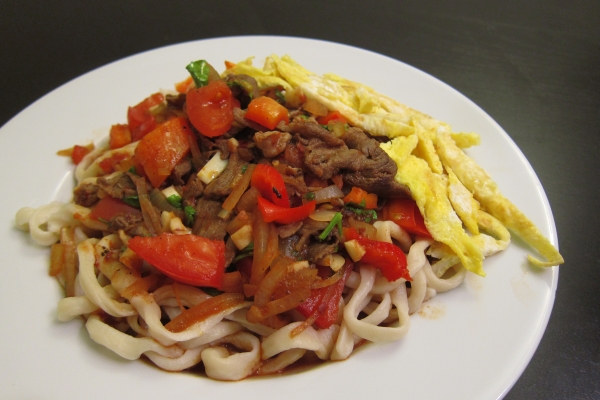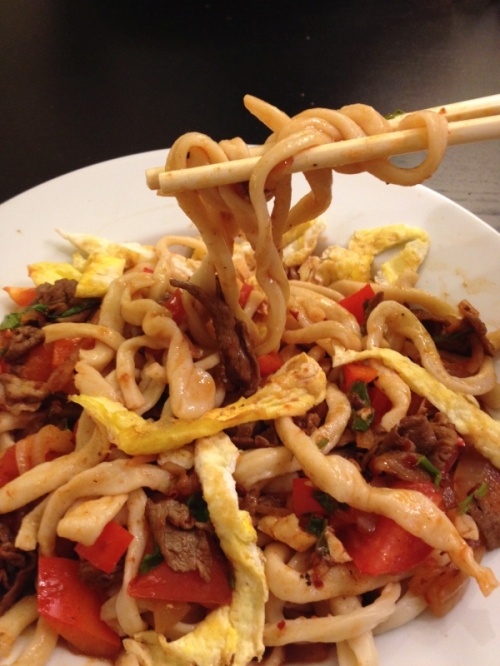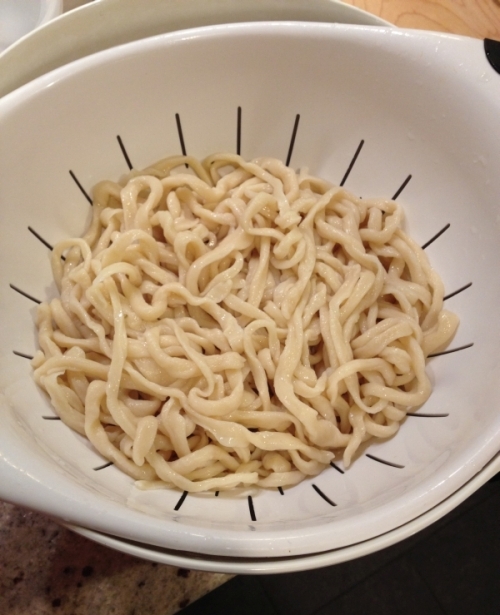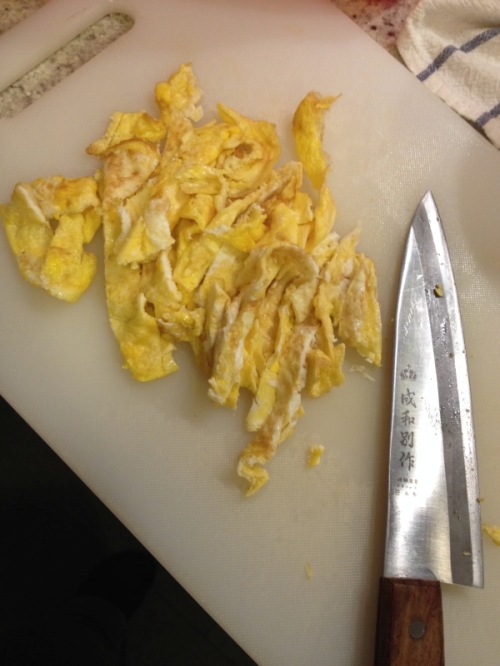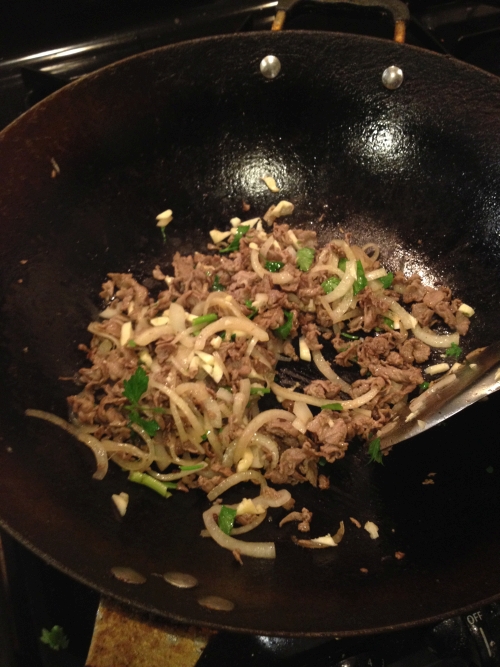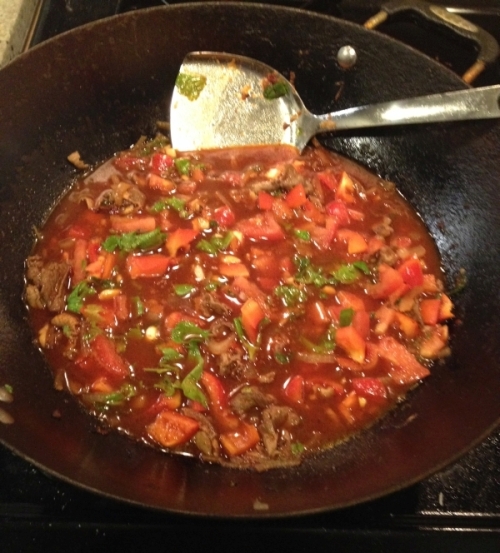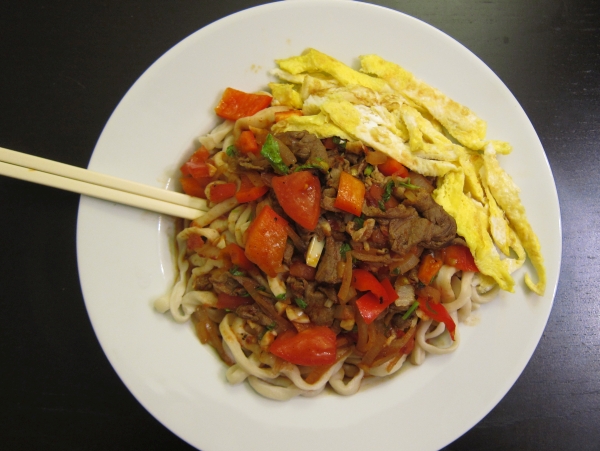
Samsa (самса, 烤包子) are baked buns that are eaten all over Central Asia. The filling is usually meat (beef or lamb), onions, and plenty of fat. As you might guess from the name, they are distantly related to Indian samosas. In Xinjiang, they sell these on the street in every city.

Samsa are usually fairly greasy and, like most Central Asian food, best washed down with hot green tea. I often bought samsas to eat on long-distance buses in Xinjiang; one time a man next to me saw my water bottle and cautioned me against drinking it with the samsas. The traditional belief (not only in Xinjiang, but across Eastern Europe and Asia) is that drinking cold things is bad for your digestion, especially after eating greasy food.

These are traditionally baked in a tandyr oven like nan bread – sticking them straight to the wall and prying them off with tongs. I used a pizza stone and got good results – unlike nan, you can get pretty close to the real thing at home.
The recipe here is for the standard meat samsa. You can also fill them with pumpkin and onion. Although not traditional, I imagine yam or sweet potato would work well too, maybe even taro! You can wrap a chicken drumstick with onion and samsa dough and make amazing baked chicken samsas that turn out wonderfully juicy and tender inside.
Natalia Kim has a nice video demonstrating the process.

Ingredients
Flour
Water
Egg
Salt
Black pepper
Meat (beef or lamb) – use a somewhat fatty cut
Onion
Butter
Directions
1. Make a dough of flour, water, egg, and salt. Knead this until it is fairly firm and let rest for an hour, in the fridge.
2. Take some dough and roll it out until it is very thin and takes up almost all of your rolling space. Lightly brush this with melted butter.
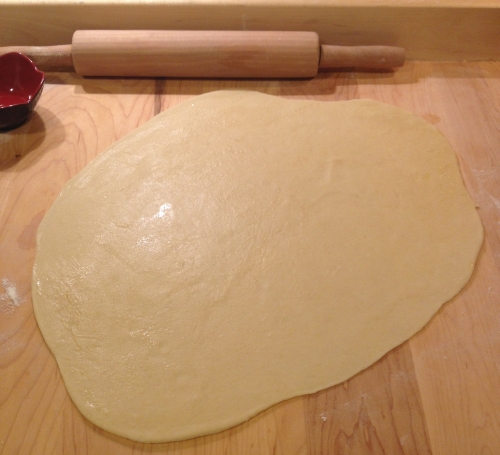
3. Roll up the dough sheet into a tube. Coil up the resulting dough twist and keep in the fridge. Do this for all of the dough.

4. Chop up the meat into fairly small pieces, making sure to leave the fatty bits in. Mix this with finely diced onion, salt, and black pepper.
5. Portion the dough twist into small pieces. Holding a piece upright (so the spiral faces the ceiling), press down on it with your other hand. What you are doing is squashing the spiral out and creating the layered dough.
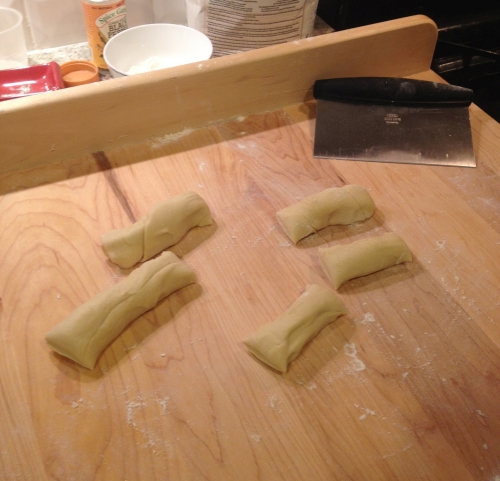
6. Roll this dough out until it is thin. Spoon a good amount of filling in, then fold it up.

If you want to make circular samsa, just bunch up the edges and press it together in the middle (a bit of water may help it stick), but make sure the edges are fairly thin or you will end up with too much dough in the center of your samsa.

If you want to make triangles, simply fold up two sides then fold the bottom. You can fold into a packet shape (two sides, then two ends) as well.
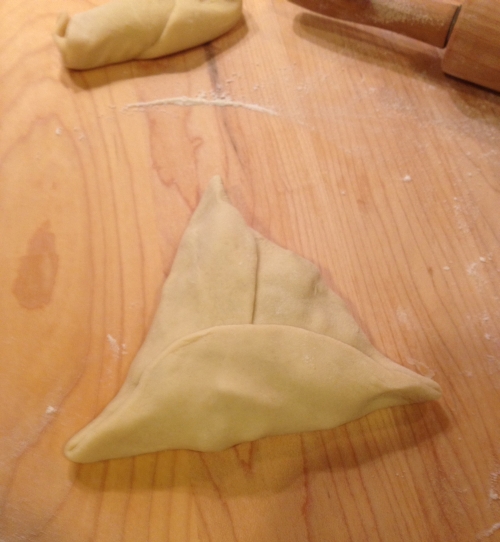
Whatever you do, make sure your samsa are sealed well so the juices don’t leak out during baking.
7. Brush the samsas with beaten egg and top with sesame and nigella seeds.
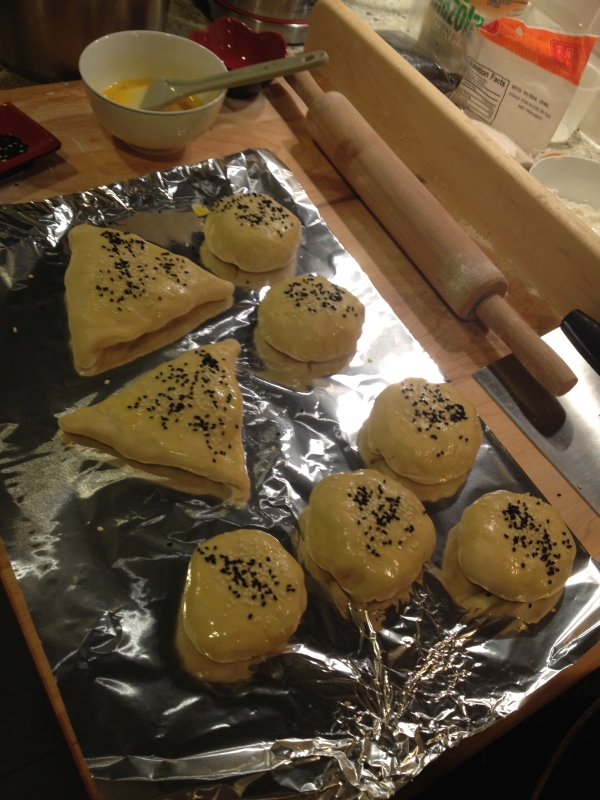
8. Have the oven preheated to 420 degrees. Place the samsa directly onto the baking stone. Alternately, you can put them on a baking sheet lined with oiled foil.
9. Bake for about 25 minutes at 420 degrees. When they are done, you should see golden brown spots appearing on them. Enjoy!


